Dawn Barker's Blog, page 8
July 23, 2013
Writers ask writers: What books changed your life?
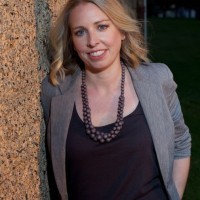 This month, we are excited to share our group blog post with the first of our guest authors – Hannah Richell. Hannah has written two novels: The Secrets of the Tides, and her latest, The Shadow Year. I have read both of her books, and honestly loved them. I also had the pleasure of meeting Hannah this year when we both spoke at the Sydney Writers Festival, so I’m really pleased that this month she too is answering our writing group’s shared blog question: What are the books that changed your life?
This month, we are excited to share our group blog post with the first of our guest authors – Hannah Richell. Hannah has written two novels: The Secrets of the Tides, and her latest, The Shadow Year. I have read both of her books, and honestly loved them. I also had the pleasure of meeting Hannah this year when we both spoke at the Sydney Writers Festival, so I’m really pleased that this month she too is answering our writing group’s shared blog question: What are the books that changed your life?
This is a difficult one for me to answer, as like most writers, there are so many books that have influenced the way I think and work. But, if I think back over my reading life, there are some books that I can vividly remember buying, or reading, and it’s these that I’ve chosen today. I’ve limited myself to six books, though it’s been difficult!
Malory Towers books by Enid Blyton
[image error]Ah, I just had to include these books. When I read these (were there really only six?) I longed to go to boarding school, have midnight feasts and have drawers that linked dorms together so I could pass secret notes to my schoolfriends. I can remember specific scenes in these novels, in the same way that I can instantly recall characters from Blyton’s earlier books (The Magic Faraway Tree and The Wishing Chair books). These were the books that completely captured my imagination as a child and did what every book should do: transported me into a different world.
Memoirs of a Geisha by Arthur Golden
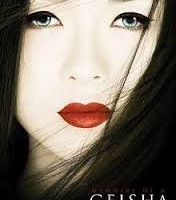
One day, as a young University student, I realised I had read almost every Stephen King, Dean Koontz, Danielle Steele and Virginia Andrews novel – the books I read in my late adolescence. It’s not that I didn’t enjoy them any more, but I felt like I knew the formula to them, and wanted something more. I remember walking into Waterstones, in my home town of Aberdeen, and instead of going to the horror section, browsed in the new releases and picked up Memoirs of a Geisha. I was anxious about risking my meager student money on an author I hadn’t heard of, but the blurb sounded interesting. I bought it, and remember lying on the couch in my flat, starting to read and just loving it. I loved it because it was a new type of reading experience for me: it was a character exploration, it was realistic, and it helped me to learn about another culture. From then on, my reading preferences changed.
A Prayer for Owen Meany by John Irving
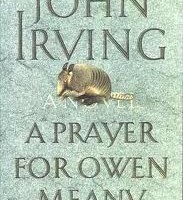 While working as a young doctor, a colleague of mine was reading this book in the on-call room. He was shocked that I’d never read John Irving, and passed on his copy of this to me. It was an amazing book. Owen Meany is perhaps one of the most memorable characters I’ve ever come across in fiction: this tiny, squeaky voiced little child with divine aspirations… I promptly read every other book by John Irving and love his imagination, his characters and his brilliant story telling.
While working as a young doctor, a colleague of mine was reading this book in the on-call room. He was shocked that I’d never read John Irving, and passed on his copy of this to me. It was an amazing book. Owen Meany is perhaps one of the most memorable characters I’ve ever come across in fiction: this tiny, squeaky voiced little child with divine aspirations… I promptly read every other book by John Irving and love his imagination, his characters and his brilliant story telling.
The Secret History by Donna Tartt
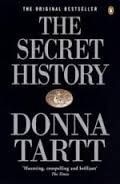
I was browsing in a bookshop in Sydney, with no idea what to read. I remember looking on the shelves and realizing I’d read every book by my then-favourite authors, Margaret Atwood and John Irving. In a wonderful example of hand-selling by a great bookseller, this book was suggested to me. When I started reading it, I was completely drawn into the world Tartt had created. It reminded me – as was her intention – of Greek mythology, with a perfect structure, and a narrating ‘chorus’. I re-read this book a few years ago and I must say that the second time round, I didn’t like it nearly as much. It was a good lesson to me not to re-visit old favourites: when books come to you at the right time in your life, they are a perfect fit, but this isn’t necessarily the case in years to come.
The First Stone by Helen Garner
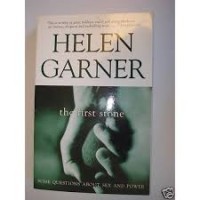
Wow. I took this book out of the library, and can remember sitting on an armchair one evening and reading this in one sitting. This was non-fiction in a way I’d never experienced: it was written in a narrative style that completely engaged me; it was shocking; my allegiances shifted with every chapter. It’s a book I still think about as an example of the power of great journalistic narrative, and I would love one day to write a non-fiction book in this style.
We Need To Talk About Kevin by Lionel Shriver
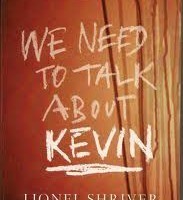
This was the book that has had the biggest influence on my own writing career. I can’t remember why I picked it up, but I do remember that as soon as I started reading it, I had a physical reaction: my heart sped up, my skin tingled. This was a story that was incredibly confronting, that dealt with the psychological conflicts of parenting, that made me want to talk about it. It was an incredible moment when I finished it, as I knew then that people – like me – did want to read about difficult topics, and more importantly, they did want to discuss them. It was then that I knew that I would write Fractured.
What books have changed the other writers in our group?
It’s been fascinating reading the other posts below, especially as there are so many books that make it onto several lists, and others that I wish I’d included!
Our guest author, Hannah Richell talks about one very special book. Her post was very familiar to me as a previous student of Latin (Caecilius est in atrio anyone? Amo amas amat…)
Natasha Lester describes several books that have influenced her throughout various stages of her life, including several that I could easily add to my list!
Amanda Curtin also has the Malory Towers books on her list, as well as some others that I’m not familiar with…
Emma Chapman has yet another vote for Enid Blyton on her list too, and some other classics…
Sara Foster has some fabulous books in her ‘inspiring, absorbing, twisty fiction’ section, books that I too love and find inspiring for my own writing.
Annabel Smith has list of books that I haven’t read! But they’re on my to-read list now!
I’d love to hear from readers of our blogs too: what books have changed your life?
June 25, 2013
Writers ask writers: How do you maintain interest in your writing project when you’re discouraged?
Writing a novel is a long-term project. When I write, I have flurries of inspiration and enthusiasm – usually at the start of a project – when the ideas seem to come from everywhere, when I can’t type fast enough to keep up with the words that come to me. In that expansive, manic phase, I love my novel, and think it’s going to be brilliant. But there are other times when the project seems terrible, mundane, unoriginal, and I want to give up.
I’m currently writing my second novel, and I’ve been through this cycle of euphoria and despair several times already. I’m back at the top at the moment: a good time to reflect on how I manage to keep going with a project when I’m discouraged – the topic of this month’s collaborative blog post with my writing group of Perth women fiction writers.
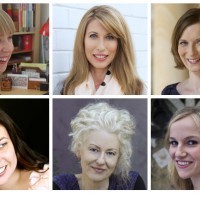
Annabel Smith, Natasha Lester, Dawn Barker, Sara Foster, Amanda Curtin, Emma Chapman
When I had the idea for my current project, about 2 years ago now, I loved it. It’s a topic that’s controversial, sensitive, and ethically murky, and involves mental health, children, parenting – exactly what I love to explore through fiction. Straight away, I scribbled pages and pages of ideas in a notebook, then over the next three months, wrote the first draft while I was waiting for edits of Fractured to come back to me from my publisher. I then put the draft away, had my third child, and turned my attention back to launching Fractured.
Once Fractured was published, it was time to move on and write something new. I printed out the draft of my second novel, and read it from start to finish. I didn’t like it. It was too simple, boring even. I spoke to my agent and publisher, and part of me wanted them to hate it, to give me an excuse to give up and start something new. But they liked the idea.
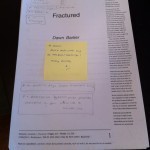
I reminded myself that I felt the same way about my first novel many times during the years that it took to complete – the first draft of Fractured is almost unrecognizable compared to the finished book. First drafts are just that – very early, rough sketches of a story. For me, self-doubt is a protective mechanism, particularly as I get to the point of having to let someone else see my work: if I tell myself it’s terrible, then I can brace myself for criticism and rejection.I talked again with my publisher, and her enthusiasm perked me up. She had some great ideas about the overall structure, and I realised that I really only had half of a story and needed to add a whole other strand.
In the past few weeks, I’ve decided to add yet another element to the story, and sub-plots and links are starting to come to me while I’m doing other things, sending me running to my computer to jot them down.
These ideas came to me after researching around the topic of my book: watching a documentary and listening to a podcast; meeting with the director of a medical clinic; reading blogs and books of real people dealing with the issues I cover. I’ve also decided to trust my subconscious – this is where the best ideas come from, and it’s not a place that you can access through force. As an example of this, I went for a run a couple of weeks ago, and suddenly thought of a beach that I’d heard of, close to Fremantle (where my novel is largely set). I’d never been there, so that morning I packed the three kids in the car and went there. As soon as I saw it, I knew it was a place that had to be in my story. Later, I started to research the tragic history of that beach, and I read a line that about a local Aboriginal myth really resonated with me: “…they sang to make him crazy.” It fitted perfectly with another scene I had already written, and could see the links appearing between characters and settings and times. I now have that line written above my desk as I try to fit all the pieces together.
That is the reason I write: when I feel like the project is going nowhere, something happens that starts it all again: the thrill, the excitement when you know that you can write something that might just work. Any long-term project goes through these cycles.
Overall though – and pardon the clichéd metaphor – writing a novel is the marathon. There are moments when the going is easy, exhilarating, and there are other times when you want to give up. Those are the times when you might need to walk for a bit, catch your breath, then keep moving forwards. The adrenalin at the end, the endorphins and the sense of achievement, is worth it.
So here’s a summary of how I manage to keep going:
• I accept that loss of motivation is part of that emotional cycle of novel writing and remind myself that soon, I’ll be back on top with anticipation burning through me
• I discuss my ideas with someone, and try to find that passion again for the premise of the story
• I research around the topic – watch a documentary, read someone’s blog, travel to a setting
• I let my subconscious rest and find the answers
And you can read what the other authors in my writing group do:
Amanda Curtin accepts that it’s OK not to plan, not to know…
Emma Chapman tries to find peace in the knowledge that nothing comes out perfect first time…
Sara Foster has learned not to fear discouragement, as the stumbling block might contain a valuable lesson…
Annabel Smith finds the answer lies with her husband, Jonathan Franzen and Ferris Bueller…
Natasha Lester uses other books to inspire her, and has learned to relax and have fun while writing…
May 30, 2013
Interview with author and psychiatrist Bulbul Bahuguna
[image error]I don’t know of many psychiatrists who, like me, also write, and so I’m thrilled to be interviewing Bulbul Bahuguna this week. Bulbul Bahuguna, M.D. is author of the novel, The Ghosts That Come Between Us. She is a psychiatrist with over 20 years of experience treating victims of abuse. Dr. Bahuguna is on staff at NorthShore University Health Systems, which is affiliated with The University of Chicago and Mayo Clinic. She is a National Trustee of American India Foundation — a leading charity involved in accelerating social change in India.
Can you tell us a little bit about your novel, The Ghosts That Come Between Us?
The Ghosts That Come Between Us is a first-person narrative that follows the life of a girl named Nargis. The story starts in the Himalayas in post-independence India, spans through Communist Russia, and ends in a Chicago suburb in the United States. While the book recounts delightful memories of childhood in the sixties and colorful anecdotes of family travels through young urban and rural feudal India, finding love behind the impervious Iron Curtain, and the adventure and challenge of immigrating to the U.S., the book in the main is about Nargis’ struggle to escape the confusing relationship with her father, Brigadier Yadav, and forgo the special status she thrived in and enjoyed growing up. The closure Nargis strives for, she painfully realizes, has to come from within. Nargis’ journey combines the daring straightforwardness of innocent childhood with the poetic eloquence of an adult engaged in hazy reflection. Nargis is dynamic and opinionated, and simply charms the reader with her boldness and vulnerability. My novel is a gripping account of family drama, dynamics and dysfunction. Nargis is a survivor. I would like to leave the reader with this: can one experience define your entire life?
The book deals with a confronting topic — what made you decide to write about a subject that is often taboo?
It is unfortunate that a person has either been himself abused by someone, or knows of someone else who has been abused. Sexual abuse often happens in the secrecy of a home and goes unreported. Silence only enables the crime. To be brave is to be honest. I have been a psychiatrist for over 22 years, and have treated scores of patients with abuse issues. I have seen people struggle with family dysfunction and sexual victimization, i.e., having to cope with blame, guilt and shame, as well as secrecy, stigma and self-flagellation, feeling stuck and having difficulty in moving on. Listening to the heart-wrenching stories of scores of families in my professional work as a psychiatrist impelled me to create a fictional protagonist, Nargis. She is a composite character made of several people I have had the privilege of knowing during my adult life who have demonstrated the courage to cope with the struggles of childhood abuse, and the abandonment and loss of loved ones. My goal in writing this novel is to enhance the awareness of abuse issues. Nargis’ first-person narration of a complicated relationship with her father helps the victims of family dysfunction obtain solace in the thought that they are not alone, and acquire coping tools to move on in their lives. Even though the characters are fictional, Nargis’ story that celebrates the triumph of hope over despair is a universal one.
You are a psychiatrist as well as a writer — what do you think are the similarities between medicine and writing? And the differences?
I had always wanted to become a writer, but my parents told me to get a “real job”, and, as such, I chose medicine as a career. After I went through my residency in psychiatry, my life came back full circle. Like writing, psychiatry is also about story telling: it is about trying to make sense of past events, understanding human behavior, giving hope and celebrating recovery. Narrative therapy is an excellent tool used in the field of psychiatry. Being an art form is common to both disciplines. And most importantly, both a writer and a psychiatrist have a moral responsibility to make the world a better place: a duty to first do no harm. There are several differences as well. Psychiatry is an interactive science, involving real people where decisions that can have far-reaching consequences need to be made on the spur of the moment. While writing, one can delete quite easily to change the outcome. And of course, we all know that truth is stranger than fiction.
How do you manage the practicalities of writing fiction while running a medical practice?
It has been interesting, challenging and gratifying. You have to manufacture time; or steal time from sleep. But eventually, it comes to being motivated to give a part of yourself to others.
Now that your book has been published, what does the future hold for you as a writer?
As long as there are people on our Earth, there will always be stories that are inspired by the real lives of people. And stories that will move and inspire others. I have several such stories in me. I am currently working on my next novel.
[image error]The Ghosts That Come Between Us can be ordered at Amazon.com. The e-book format is available for Kindle as well as Nook.
May 26, 2013
Sydney Writers Festival highlights
[image error]I flew back yesterday from Sydney Writers Festival, and already it seems like it was months ago, as it seems so far removed from my normal life! I spoke at five events over four days, so it was a hectic week but I loved meeting so many other writers and readers. I didn’t have a lot of time to watch other sessions but did have lots of informal chats with authors so learned a lot.
I used to live in Sydney, so when the plane flew over the Harbour Bridge and Opera House, I felt like I was returning home. I soon remembered the less glorious side of Sydney life as we sat in a car for almost two hours trying to get from the City to Bankstown library as it rained and rained. But it was worth it to meet the people who had braved the weather to come to see me talk. The highlight was when the librarian’s daughter – a high school student – told me how much she loves writing, and asked for my autograph!
The next day, I met with the team from Hachette Australia at their office, then went out to meet a few booksellers and sign copies of Fractured. My talk that afternoon was with two amazing women: Helen Sage (A Flower Between The Cracks) and Anne Deveson (Tell Me I’m Here; Waging Peace), chaired by Caroline Overington (Sisters of Mercy is her latest book) on ‘Writing Painful Experiences’. Helen and Anna have both written non-fiction about intensely powerful and painful experiences, and I was humbled to speak on a panel with them.
That evening, I ran through the rain to the Festival Club, and I’m so glad I did as it was a fantastic venue. I got there just in time to watch ‘The Chaser’ team interviewing three writers, then saw Kate Miller-Heidke play some songs before an amazing multi-sensory rendition of Courtney Collins’ The Burial – Courtney read from her novel accompanied by live music and animation. It was mesmerising.
 On Friday I had the absolute pleasure of chairing a panel called ‘What Should We Tell Our Children?’ with Maxine McKew, Chris Sarra, Richard Gill and Stephanie Alexander, all of whom have had wonderful and inspiring careers, and have lots to say! The biggest issue was that we didn’t have enough time in a one hour session to really explore their collective wisdom. The best moment was when Stephanie Alexander pulled a copy of Fractured from her bag and asked me to sign it for her! I tried to act ‘cool’ but may well have shrieked…
On Friday I had the absolute pleasure of chairing a panel called ‘What Should We Tell Our Children?’ with Maxine McKew, Chris Sarra, Richard Gill and Stephanie Alexander, all of whom have had wonderful and inspiring careers, and have lots to say! The biggest issue was that we didn’t have enough time in a one hour session to really explore their collective wisdom. The best moment was when Stephanie Alexander pulled a copy of Fractured from her bag and asked me to sign it for her! I tried to act ‘cool’ but may well have shrieked…
That afternoon I spoke on another panel with Andrew Croome (Midnight Empire) and John M Green (The Trusted), chaired by Tom Wright – this panel was about reality and fiction. It was really interesting, as while John and Andrew’s novels are thrillers pushing reality to its limit, and quite different in style and theme to Fractured, Tom did a marvellous job of drawing parallels between what we all do when we write reality-based fiction.
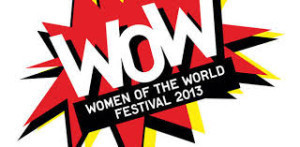 My final session on Saturday afternoon was the Southbank Centre’s WOW (Women of the World) speed mentoring session, based on an event started in London three years ago. This brought together 100 ‘mentors’ (including me) from all walks of life, and 100 ‘mentees’ – women who wanted the chance to discuss life or career issues. The mentees had 4 x 15 minutes sessions with 4 random mentors. I felt quite underqualified to be giving advice, especially as I realised that many of the issues the women discussed were issues that I battle with myself every day as I try to juggle a family and a career. It was an emotional experience, especially when Anna Bligh (who herself was a mentor!), gave a wonderful closing address about the place of women in today’s world. Afterwards, the mentors stayed behind for a champagne reception and I had the pleasure of chatting with lots of amazing women: writers, actors, businesswomen, journalists, marketers, life coaches, academics… I came away feeling very motivated and empowered.
My final session on Saturday afternoon was the Southbank Centre’s WOW (Women of the World) speed mentoring session, based on an event started in London three years ago. This brought together 100 ‘mentors’ (including me) from all walks of life, and 100 ‘mentees’ – women who wanted the chance to discuss life or career issues. The mentees had 4 x 15 minutes sessions with 4 random mentors. I felt quite underqualified to be giving advice, especially as I realised that many of the issues the women discussed were issues that I battle with myself every day as I try to juggle a family and a career. It was an emotional experience, especially when Anna Bligh (who herself was a mentor!), gave a wonderful closing address about the place of women in today’s world. Afterwards, the mentors stayed behind for a champagne reception and I had the pleasure of chatting with lots of amazing women: writers, actors, businesswomen, journalists, marketers, life coaches, academics… I came away feeling very motivated and empowered.
The whole writers festival was inspiring, and a very welcome change to the relative isolation of the day to day business of writing. It’s time now to get back to writing my second novel though, so that I can make sure I’m invited back to the festival in years to come!
Thanks to everyone involved in the planning and coordination of the festival, and thanks to all the authors and industry professionals for making me feel so welcome!
May 21, 2013
Writers ask writers: Where do you write?
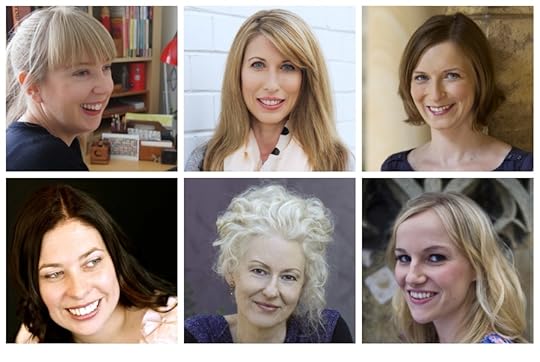
Annabel Smith, Natasha Lester, Dawn Barker, Sara Foster, Amanda Curtin, Emma Chapman
This month, my writing group is asking the question, “Where do you write?”
I often see interviews with writers where they post pictures of beautiful writing spaces: battered old desks in a bright, airy cottage overlooking a lush garden with a cat curled up on an armchair, or a beautiful oak-panelled study with floor to ceiling bookshelves. I’m afraid my writing space isn’t as glamorous.
I do a lot of my writing in my local library. With young children, I have to treat my writing like a job, and I find I work much better if I get out of the house, away from distractions (washing, making cups of tea, weeding the garden, walking the dog…procrastination). If I have a babysitter, I head down to the library and get a few hours of solid writing done.

My desk…
I don’t have a babysitter very often though, and then I have to write at home – either when the children have an afternoon nap, or at night when they’re in bed. I am lucky enough to have an office, and I try to keep it child-free although at the moment there’s a fairy doll and several crayons on my desk, and post-it notes and envelopes scribbled with highlighter pen are scattered all over the floor. It helps to have a dedicated writing space at home that I can associate purely with writing. Before I had an office, I’d write at the kitchen table, or with my laptop on my knees in bed, but I like the feeling now of entering a new physical and emotional space when I sit down at my desk.
I’ve seen where Natasha Lester writes, and it’s as beautiful as she describes in her post. Amanda Curtin has written in some amazing places around the world, while Emma Chapman describes writing amidst packing for an international move, inspired by a quote from Hilary Mantel (that I think I will stick above my desk too). Annabel Smith has written in spectacular Australian libraries, while Sara Foster is a nomdic author, and
May 13, 2013
My second book…
I’m thrilled to announce that today, I have signed a contract with Hachette Australia for my second novel!
This novel will be a completely new story, but will continue some of the same themes as Fractured, themes that dominate my life as a mum and psychiatrist: parenting, infant attachment and bonding, mental health and ultimately, relationships. I’m still hard at work on it so will say no more for now…
I’m so happy to working with the same team again. Everyone at Hachette believed in Fractured from the very beginning, so to work with them again is wonderful. At this point, we hope to publish the new novel in around a year from now.
I just have to finish it first…
May 9, 2013
May events
I’ve just looked at my diary and realised that the next few weeks are going to be very busy!
This week, I attended my first book club via Skype to discuss Fractured. I dialled in to a club in Bondi, and the ladies sat around their dining table with me/the laptop at the head of the table. We drank wine and chatted about the book, and it was the next best thing to being there in person! Next week I’ll be visiting another book club in person, and have another couple organised too. Do let me know if you’re talking about Fractured for your club and I’ll happily Skype in and answer any questions!
On Monday 13th May at 6.30pm, I’ll be at AH Bracks library in Melville, WA, in conjunction with Dymocks Garden City, then on Tuesday 14th May from 6.15pm, I’ll be talking at South Perth Library in conjunction with Dymocks Hay Street.
I’ll then be heading ‘down south’ for the Margaret River Readers and Writers Festival where I’ll be doing two sessions on Saturday 18th May.
After driving back up to Perth, I’m flying to Sydney for the Sydney Writers Festival. I’ll be at Blacktown library on Wednesday 22nd May, then have a few events at the festival over the following few days from Thursday 23rd to Saturday 25th May.
You can find out more details about all of the events here. Come and say hello if you can make any of them!
April 30, 2013
Book giveaway – win 12 books, including Fractured
I mentioned in my last post that I have joined a fantastic writing group with five other West Australian writers. We have decided to run a huge book giveaway where you can win a copy of each of our books: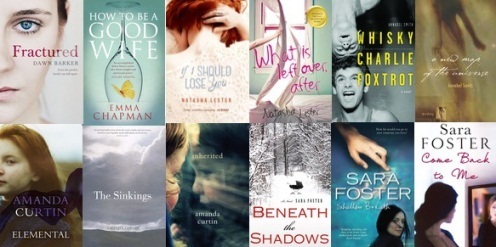 That’s a total of twelve books! We can arrange for them to be posted either in Australia or the UK, and you can enter here via Facebook.
That’s a total of twelve books! We can arrange for them to be posted either in Australia or the UK, and you can enter here via Facebook.
Good luck!
April 23, 2013
Writers ask writers: The Writing Process

Annabel Smith, Natasha Lester, Dawn Barker, Sara Foster, Amanda Curtin, Emma Chapman
Writing is a solitary business, and being in Western Australia, it can seem even more isolated from the east-coast-centric Australian publishing industry. During the recent Perth Writers Festival, I met five other Perth-based female authors and we have formed a group to support each other. One part of this is our new ‘Writers Ask Writers’ blog series, where each month, we will all discuss one aspect of the writing life. This is our first post – the writing process.
When I sat down to write this, I wasn’t clear that I really had a ‘process’. As a mother of three young children, I have to grab writing time when I can, either when the children are asleep, or when I have a few hours of babysitting. The most important thing for me when I write is knowing that I won’t be interrupted, even if that’s only for an hour. And when I know I only have an hour, I make sure that I use every second of it. Writing a novel to me sometimes feels haphazard and disorganized, but on reflection, underneath all the snatched moments at the computer and the scribbles on pieces of paper, there is some sort of order…
The first draft
When I first started writing, I would never get past the first page as I’d read what I’d written, declare it was terrible, become despondent, then give up. The best advice I was ever given is, ‘if you want to be a writer, you have to write’, and that’s what I do in the first draft of a story: I just allow myself to write, to spill out ideas onto the page, and to explore themes and ideas. I don’t let myself read back or edit what I’ve written until the end of that draft. I tell myself it doesn’t matter how terrible it is, I can fix it later. To make sure I keep writing, I set myself a word target, starting at 500 words a day, 5 days a week – easily achievable when the kids are napping. That’s 2500 words a week, 10000 words a month, but inevitably I write a bit more than 500 words and the count goes up further. As I pick up the pace, I increase my target to 750 words a day, then 1000. It takes me 4-6 months to write the first draft.
It’s later…now I have to fix it
After the freedom of allowing myself to write anything and everything for six months, I now reach the time when I have to fix it. In a way I dread this stage, but on the other hand, it appeals to my logical side, and I can break the task into chunks.
I congratulate myself on finishing the first draft, send it to be printed and bound, then collect the thick manuscript from the printer to see and
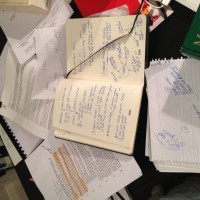
Where I’m up to in the ‘process’ of book two…
feel the work I’ve done. While I’m at the office shop, I buy myself some new stationary: an A4 notebook, highlighters, post-it notes, maybe a new pen. Ah yes, then I feel like a real writer…
Over the next 2 or 3 days I read. I don’t write anything, as much as I want to. I try to just read it, to let the story sit in my mind for a few days while my subconscious works out what needs to change. A few days later, I open up my new notebook and read it again, this time starting to add notes and scribbles. And then I go back to the beginning again and start writing again.
This is the stage I’m at with my second novel: I know where the (huge) gaps in my story are, and I’m writing new scenes and working out what I need to join up the story. I tend to write initially in a linear, temporal fashion – this way I know each character’s emotional journey, but that’s not necessarily the best way to tell the story. That comes next…
Research, plot and restructuring
I don’t allow myself to do too much research until this stage. For me, researching the facts of a story too early constrains me and makes me worry too much about the facts rather than the psychological journey of my characters. For my current work in progress, I’m only now doing legal and medical research to make sure I have correct timelines and facts, then I’ll add scenes to make the storyline realistic, and fit my first draft ‘story’ into that.
To be an appealing book to read, the story needs to follow a dramatic arc, with a plot and structure. For example, in Fractured, I structured the book into alternating sections before and after the central event of the story. I don’t know how I’ll structure my new book yet! I know a lot of writers plan this before starting to write, and sometimes I think it would be easier – but what I love about writing is not knowing where the story will go and how it will end.
Rinse and repeat
Once I’ve picked apart my first draft, re-ordered it and written more scenes to fill in the gaps, I print it out again and go through the same process. Then I do it again. And again.
Fractured went through about five or six drafts before I was ready to move on to the final stage.
The small stuff
Once I’m vaguely happy with the structure (and I’m NEVER happy with it, not really!) I go back to the beginning, and print out each scene individually then start painting in the layers, adding depth to the characters, looking at the language, the words, the dialogue – I will do this a few times before declaring that scene is ‘finished’, send it to a friend to read, then move on to scene two.
Finished?
I read the novel again and tinker with it some more, but it gets to the point where I know that I can no longer look at it objectively. In Fractured, I knew the characters so well in my head that I could no longer tell whether I was conveying things well on the page to someone completely new. I was sick of reading it, and was going cross-eyed every time I looked at the text. This for me, was when I knew it was finished. Not perfect, but as good as I could make it at that stage. I knew that if I edited it any more, I might ruin what I had, and I needed to send it out to a professional for an objective opinion.
As I wrote this, I started to panic a bit about just how much work I still have to do with book two! But the benefit of this being my second novel is that I know that with each edit, the manuscript improves, and the later stages become easier and easier.
I love to read about how other writers write, as it gives me ideas for my own work. Here, you can read about how the other authors in this group write – it’s fascinating reading because we all work in different ways:
 Emma Chapman, author of How To Be A Good Wife (which has a cover endorsement by none other than Hilary Mantel!).
Emma Chapman, author of How To Be A Good Wife (which has a cover endorsement by none other than Hilary Mantel!).
Amanda Curtin, editor and multi-award winning author of The Sinkings, Elemental and Inherited.

Amanda has written her blog post as beautifully as she writes her fiction, such as her description of research, “a truly spidery activity: throwing spinnerets far into the breeze, following them as far as they’ll go, or as far as you want to take them, seeing what sticks, and where, finding bridges between strands, filling in, unpicking, abandoning, rebuilding.”
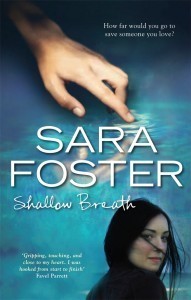 Sara Foster, bestselling author of Shallow Breath, Come Back To Me, and Beneath The Shadows
Sara Foster, bestselling author of Shallow Breath, Come Back To Me, and Beneath The Shadows
Natasha Lester, author of the TAG Hungerford award-winning What is Left Over, After and If I Should Lose You
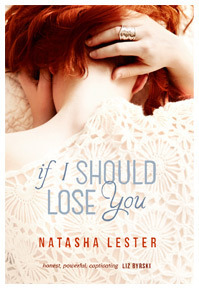
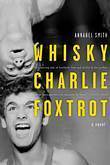 Annabel Smith, author of A New Map of the Universe and Whisky Charlie Foxtrot
Annabel Smith, author of A New Map of the Universe and Whisky Charlie Foxtrot
April 17, 2013
Books in Homes Australia role model
A couple of months ago, I was honoured to be asked to be a ‘role model’ for the Books in Homes Australia project, and immediately agreed. This programme was started in New Zealand over twenty years ago, and came to Australia in 2001. The programme’s vision is to “re-awaken a sense of wonder in children and excitement in parents, by creating an Australia where every child and family has access to books of choice at home.” It gives books to children and families living in remote and low socio-economic circumstances.
Each of the schools involved has a sponsor who provides the books. The children are given a choice of books, and over the course of a year, receive nine books each, to keep and start their own home library. Three times per year, at the end of term, the school has a special book-giving assembly where their role model talks to them about reading, and then each child is presented with a book bag with their books.
I went last week to St Gerard’s primary school in Westmister, in the north of Perth. Before the assembly, I looked at the pictures that the children had drawn to thank the sponsors (QBE). Many of them had things written on them, and this picture caught my eye and really summed up the reason for the programme:
[image error]In case you can’t make out the text, it says this:
“Thank you Books in Homes and QBE. I’m going to get nine lovely books and add it to my collection. I only got three but when I get my nine books I will have twelve. So thank you. I love books.”
I have always lived in houses surrounded by books, and my own children have dozens and dozens of book son their shelves. I find it hard to imagine a house without written stories, but that is the reality for many families. So, last week, I gave a speech at the school assembly, then gave out the book packs to the grinning children. I then went round each of the classrooms to meet each year group. I must say that the most popular book seemed to be ‘The World’s Most Dangerous Animals” – in 3D, complete with 3D glasses!
It was a brilliant experience. I was really humbled and proud to be associated with the programme and look forward to meeting the children again.
You can be part of the programme too by making a donation, sponsoring a school or community, or becoming a role model – find out more here.



